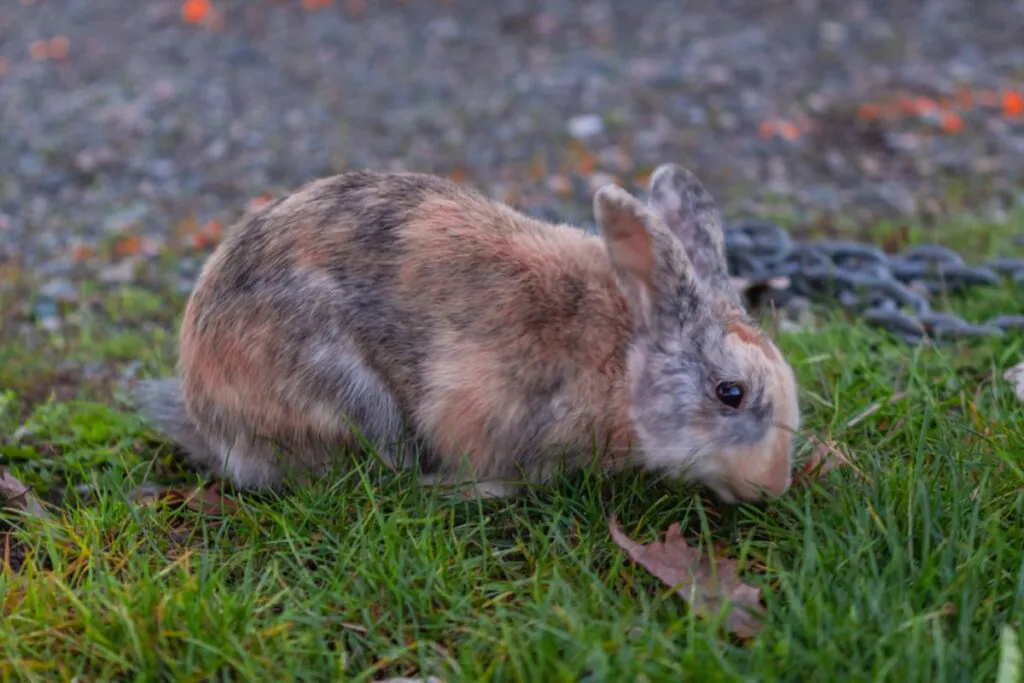Japanese rabbits love to move and play. Ample space and playtime are vital so they can romp and frolic. They also appreciate companionship, so always keep at least two together.
Accommodate them in a large, covered outdoor enclosure with multiple levels, houses, and tubes. This arrangement keeps the little troop occupied and offers plenty of variety.
Escape Artists Alert Ensure that side walls of the outdoor enclosure are buried several centimetres into the ground. Rabbits have a penchant for digging under fences and the like.
Considerations for Winter
Although Japanese rabbits have a dense fur that keeps them warm, harsh winter temperatures can prove too cold for Harlequin Rabbits.
In the wild, they would retreat into underground burrows.
In enclosures, this isn’t an option. Therefore, on particularly cold days, it’s best to bring them indoors to avoid unnecessary stress or danger.
House Training Japanese Rabbits for Indoor Living
If you opt for keeping your rabbits indoors, provide them with unrestricted roaming or set aside a dedicated playroom. Ensure all hazardous objects, like cables, are out of reach.
Rabbits are typically easy to house train. Set up a few spacious rabbit toilets throughout their living space and clean them at least twice weekly.
Positioning litter trays beneath feeders and hayracks can be helpful, as rabbits tend to relieve themselves while eating.

